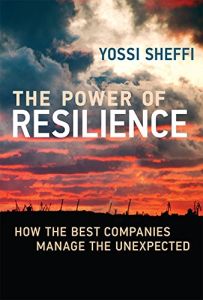Join getAbstract to access the summary!

Join getAbstract to access the summary!
Yossi Sheffi
The Power of Resilience
How the Best Companies Manage the Unexpected
MIT Press, 2015
What's inside?
To prepare for disaster, your company must audit its supply chains to uncover risk and build resilience.
Recommendation
Interdependencies within and between national economies make global and national systems – like financial networks or the world’s food chain – increasingly susceptible to disruption. A factory fire in one corner of the globe might create a supply chain domino effect – halting production of finished goods worldwide. MIT engineering instructor Yossi Sheffi warns that a breach of environmental standards by an obscure, deep-tier supplier might threaten the reputation of firms further up the chain. getAbstract recommends his forward-looking overview to leaders and risk managers – especially in large firms – who are building the response capability to deal quickly and effectively with disasters and disruptions.
Summary
About the Author
Yossi Sheffi teaches engineering systems at MIT and advises firms and governments on risk and supply chain management.



















Comment on this summary